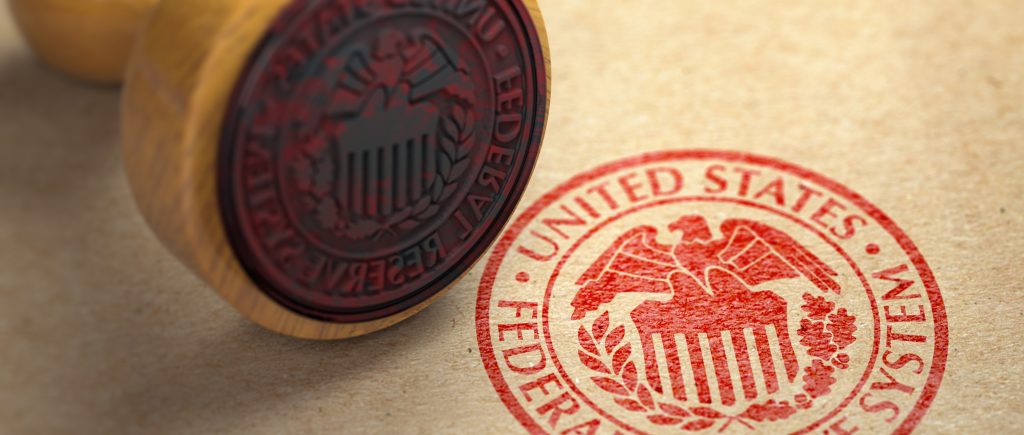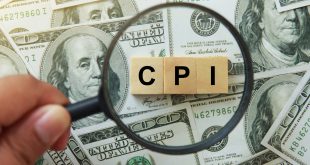As US inflation is still high and as the banking sector encounters difficulties, and as both facts necessitate and demand opposite responses, the Fed is widely seen as stuck between a rock and a hard place ahead of FOMC meeting.
Fed Chair Jerome Powell is still required to continue the battle against persistently high inflation, the Federal Reserve also faces an entirely new challenge as it meets to consider interest rates this week; namely and specifically, how to restore calm to a nervous banking system.
The Federal Reserve is facing two simultaneous problems that would normally push it in different directions. To fight elevated inflation, it would raise its benchmark rate, perhaps substantially, for the ninth time in the past year.
But at the same time, to soothe financial markets, the Fed might prefer to leave rates unchanged, at least for now. Most economists think the Fed will navigate the conundrum by raising rates by just a quarter-point when its latest policy meeting ends Wednesday.
That would be less than the half-point hike that many economists had expected before the recent collapse of two large banks. But it would still mark another step by the Fed in its continuing drive to tame inflation. If the Fed were instead to leave rates alone, which some analysts last week had suggested it might do given the banking turmoil, it could alarm Wall Street traders by suggesting that significant problems remain in the banking system.
The central bank prefers to manage financial stability issues separately from its rate decisions. One goal of a series of emergency steps the Fed announced Sunday to bolster the banking system is to allow it to separately address inflation through its rate policies.
If you are obviously seen as adjusting your monetary policy because of concerns about financial strain, then you’re admitting you’re not successfully doing crisis management.
Last week, the European Central Bank imposed a half-point rate hike to try to reduce an 8.5% inflation rate despite jitters caused by the struggles of Switzerland’s second-largest lender, Credit Suisse. ECB President Christine Lagarde said she saw “no tradeoff” between fighting inflation and preserving financial stability.
On Sunday, the Swiss banking giant UBS bought troubled Credit Suisse for $3.25 billion in a deal orchestrated by banking regulators to try to prevent potentially calamitous turmoil in global markets.
The Fed intervened in the banking emergency a little over a week ago by joining with the Treasury Department and the Federal Deposit Insurance Corporation to announce that the government would protect all of the banks’ deposits. It also unveiled an expansive emergency lending program to provide ready cash for banks and other financial institutions. And it sweetened the terms for the banks to borrow from a long-standing Fed facility known as the “discount window.”
On Thursday, the Fed said it had lent nearly $300 billion in emergency funding to banks, including a record amount from the discount window. Assuming that those programs work as intended, the Fed can focus on its ongoing campaign to cool inflation. Most recent economic reports point to a still-hot economy with strong hiring, steady consumer spending and persistent inflation.
Consumer prices rose 6% in February from a year earlier, down from a peak of 9.1% last June. Most of that decline reflected a shift in consumer spending away from goods — such as used cars, furniture and appliances, which have been falling in price — and toward services, including traveling, dining out and entertainment events.
That spending surge has kept inflation high in services categories, which Fed Chair Jerome Powell has singled out as a major concern because inflation tends to be particularly persistent in services.
Hiring and inflation figures accelerated earlier this year after having shown signs of cooling in late 2022. In response, Powell and other Fed officials suggested that the central bank would likely raise rates higher than they had forecast in December and probably keep them at a peak for longer.
When the Fed raises its key rate, it typically leads to higher rates on mortgages, auto loans, credit cards and many business loans. Typically, consumer and business spending slow in response.
The latest data indicate that we haven’t made as much progress as we thought,” Christopher Waller, a member of the Fed’s Board of Governors, said this month. The Fed’s efforts to reduce inflation to its 2% target, Waller said, “will be slower and longer than many had expected just a month or two ago.”
The banking troubles have also intensified fears among many economists that the economy could soon tumble into recession.
One reason for the pessimism is that some banks will likely curtail lending to help shore up their finances and avoid running the risk of a collapse. Economists at Goldman Sachs estimate that credit tightening by the banking sector could reduce economic growth this year by as much as a half-percentage point.

 Noor Trends News, Technical Analysis, Educational Tools and Recommendations
Noor Trends News, Technical Analysis, Educational Tools and Recommendations




